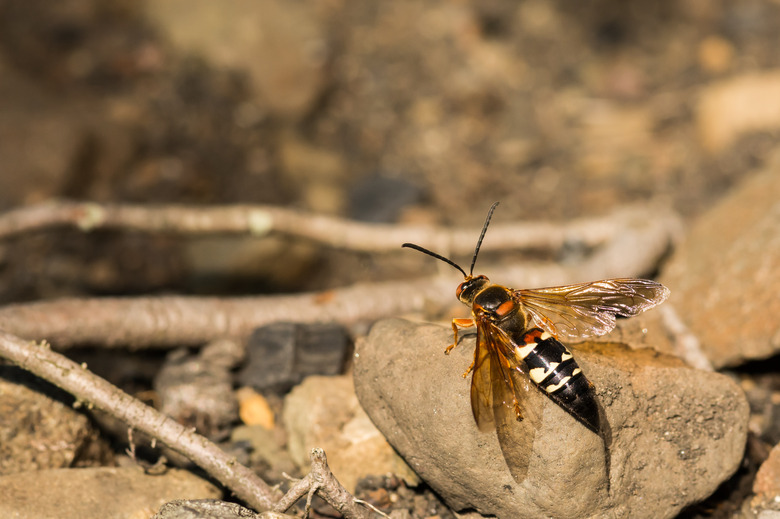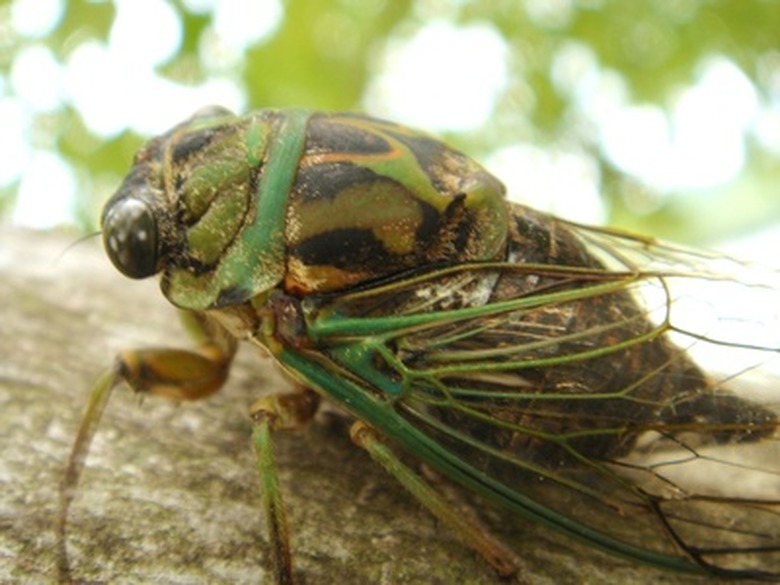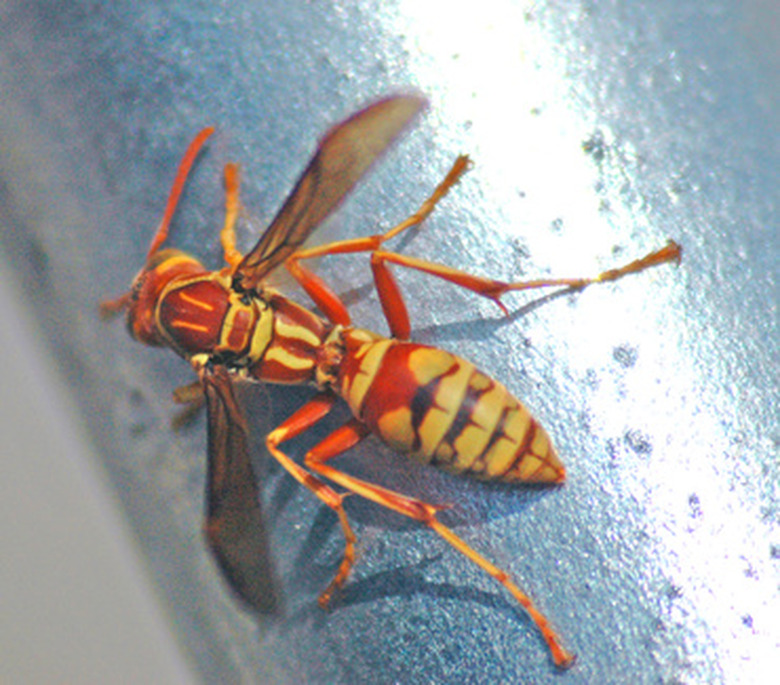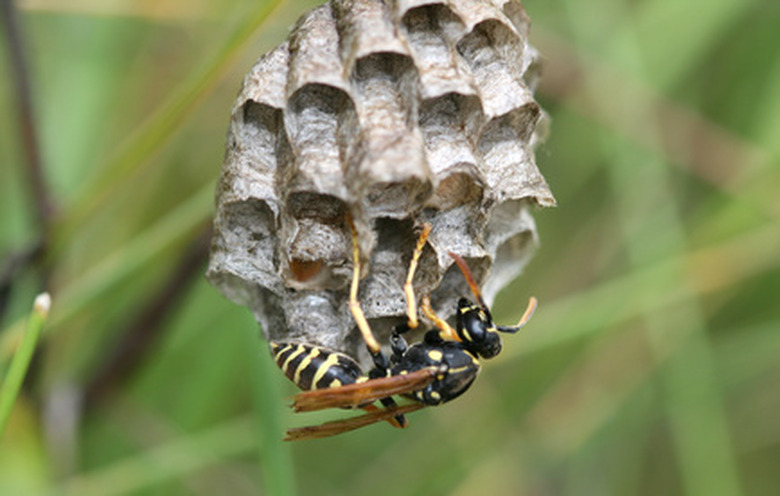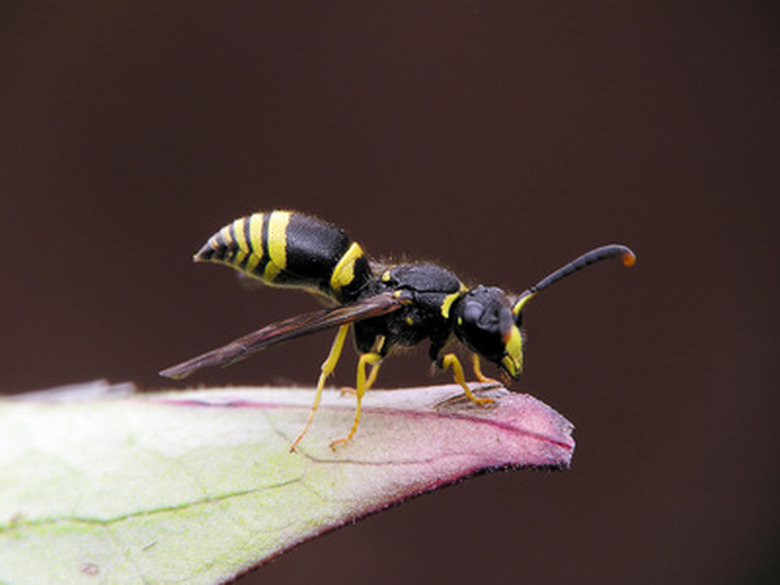Types Of Large Wasps
Wasps belong to the hymenoptera order of insects, the same order in which bees belong. Large wasps come in various colors and sizes and like bees, live in different habitats around the world. Wasps differ from bees in that they have longer and slender bodies while bees appear hairier and plumper. Virtually all species of wasps build nests rather than hives and do not produce honey like bees do. While some types of large wasps display aggressive tendencies, most others do not.
Cicada Killer
Cicada Killer
The cicada killer belongs to the Nyssonidae family and as the name suggests, preys on "dog day" cicadas of the Tibicen genus. Cicada killers can grow to a length in excess of 1½ inches, making them one of the most intimidating and formidable looking wasp species around. These large wasps live in aggregated nests in the ground, especially in open areas such as pastures and lawns. Cicada killer nests appear as earthen mounds, usually built by the female using her legs and mandibles. The males of this wasp species defend the area around such nests.
Sand Wasp
Sand Wasp
The sand wasp is another large wasp species of the nyssonidae family that also live in aggregated nests underground, especially during summer. Although most species of sand wasps live in different habitats, sandy river banks are where they're most often found. The Bembix Americana Spinolas is one of the most conspicuous and largest types of sand wasps. Female sand wasps stock their nests with different types of flies, among them deer flies and common house flies. Sand wasps have a banded color pattern like yellow jackets and hornets and are even-tempered.
Yellow Jacket
Yellow Jacket
Yellow jackets belong to the Vespidae family and have a black body with bright yellow stripes. Yellow jackets are large wasps and can reach a size between 3/8 to 5/8 of an inch. While yellow jackets generally prey on insects and spiders, they also scavenge on human food, particularly sweets and meats. These large wasps build nests underground especially in cool, dark places and around garbage. These wasps also build nests in bushes, holes in walls and trees. Yellow jackets can be dangerous because they sting repeatedly, injecting non-lethal, venom while doing so. However, on the positive side, these large wasps are helpful to farmers because they eat crop-destroying pests.
Great Golden Digger
Great Golden Digger
Great golden diggers are solitary wasps and relatively large in size. They live in nests dug into the ground, particularly in open areas exposed to the sun. They are solitary in nature so a typical nest may consist of no more than two or three cells, although females may build five or six such nests during one to two months of activity during summer. Great golden diggers do not behave in an aggressive manner like all solitary wasps.
Cite This Article
MLA
Parsons, Paul. "Types Of Large Wasps" sciencing.com, https://www.sciencing.com/types-large-wasps-6107035/. 22 November 2019.
APA
Parsons, Paul. (2019, November 22). Types Of Large Wasps. sciencing.com. Retrieved from https://www.sciencing.com/types-large-wasps-6107035/
Chicago
Parsons, Paul. Types Of Large Wasps last modified March 24, 2022. https://www.sciencing.com/types-large-wasps-6107035/
